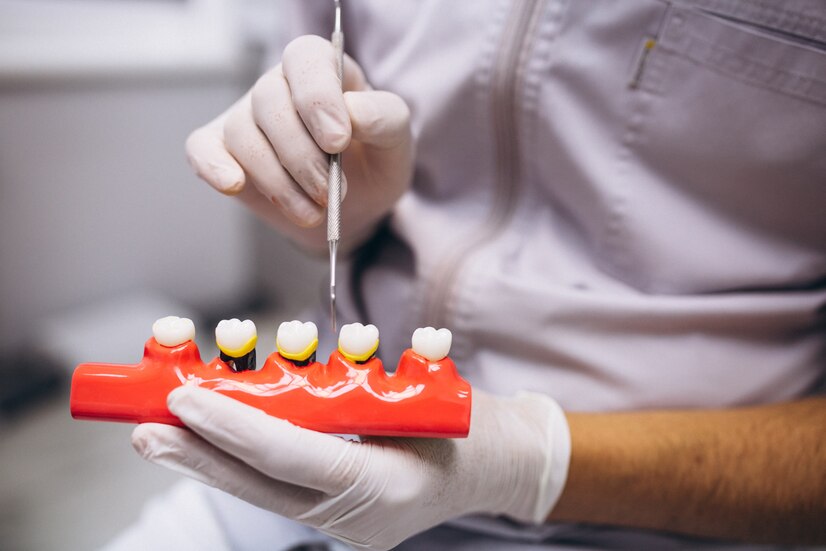In the realm of dental care, maintaining the integrity and aesthetics of one's smile is of utmost importance. Among the various restorative options available, crowns and bridges play a pivotal role in treating damaged or missing teeth. Understanding when these solutions are necessary can empower individuals to make informed decisions about their dental health.
What Are Crowns and Bridges?
Crowns are essentially caps placed over a damaged tooth. They are designed to restore the tooth's shape, size, strength, and appearance. Crowns can be made from several materials, including porcelain, metal, or a combination of both. The choice of material often depends on the location of the tooth, the extent of damage, and the patient’s aesthetic preferences.
On the other hand, bridges are used to replace one or more missing teeth. They consist of two crowns placed on the teeth adjacent to the gap, with a false tooth or teeth in between. This structure helps to fill the space created by missing teeth, restoring both function and aesthetics to the smile.
When Are Crowns Necessary?
There are several scenarios in which a crown may be deemed necessary. One of the most common reasons is when a tooth has suffered significant decay or damage. For example, if a cavity is too large for a filling, a crown can provide the necessary support and protection to the remaining tooth structure.
Additionally, crowns are often recommended after a root canal treatment. Following this procedure, the tooth may be weakened and more susceptible to fractures. A crown serves to reinforce the tooth, allowing it to function properly while protecting it from further damage.
Another situation that necessitates a crown is when a tooth is severely worn down, either due to grinding or other factors. In these cases, a crown can restore the tooth's height and function, resulting in a more comfortable bite.
Cosmetic Considerations
Crowns are not solely functional; they can also address cosmetic concerns. For individuals with discolored or misshapen teeth, a crown can enhance the overall appearance of the smile. This is particularly relevant for front teeth, where aesthetics play a significant role in one’s confidence and self-esteem.
When Are Bridges Necessary?
Bridges come into play primarily when one or more teeth are missing. The absence of teeth can lead to a range of issues, including difficulty chewing, altered speech, and shifting of adjacent teeth. A bridge effectively fills these gaps, restoring normal function and preventing further complications.
The most common reasons for needing a bridge include:
- Missing Teeth: If a patient has lost one or more teeth due to injury, decay, or periodontal disease, a bridge can restore their smile and functional capabilities.
- Maintaining Bite Alignment: Missing teeth can cause the remaining teeth to shift, leading to bite misalignment. A bridge helps to maintain proper alignment and spacing within the dental arch.
- Preventing Jawbone Loss: When teeth are lost, the jawbone can begin to deteriorate over time due to lack of stimulation. A bridge can help preserve the jawbone by providing the necessary support and stimulation during chewing.
The Bridge Procedure
Getting a bridge typically involves two dental visits. During the first visit, the teeth adjacent to the gap are prepared for crowns. Impressions are taken to ensure an accurate fit for the bridge, and a temporary bridge may be placed until the permanent one is ready. The second visit involves the placement of the permanent bridge, ensuring a comfortable and secure fit.
The Benefits of Crowns and Bridges
Opting for crowns and bridges can yield numerous benefits. Firstly, they restore functionality, allowing individuals to chew and speak with confidence. This restoration of function is vital for maintaining a balanced diet and overall health.
Secondly, these dental solutions enhance aesthetics. Both crowns and bridges can be color-matched to blend seamlessly with existing teeth, resulting in a natural appearance that boosts self-esteem.
Moreover, crowns and bridges are durable solutions. With proper care, they can last many years, making them a worthwhile investment in one’s dental health. Regular dental check-ups and good oral hygiene practices are essential for ensuring their longevity.
Maintaining Crowns and Bridges
Proper care is crucial for the longevity of crowns and bridges. Patients should maintain a diligent oral hygiene routine that includes brushing twice a day and flossing daily. Additionally, routine dental visits for cleanings and check-ups will help ensure that crowns and bridges remain in optimal condition.
It's also advisable for patients to avoid habits that could damage their dental restorations, such as using teeth as tools or chewing on hard objects. Being mindful of these practices can help prevent unnecessary wear and tear on crowns and bridges.
Conclusion
Understanding when crowns and bridges are necessary is essential for maintaining optimal dental health. Whether addressing decay, damage, or gaps from missing teeth, these restorative options provide both functional and aesthetic benefits. For individuals seeking personalized care and expert guidance, consulting with a knowledgeable dental team is crucial.
Fate Family Dental is dedicated to helping patients navigate their dental needs with compassion and professionalism. With a focus on patient comfort and tailored treatments, they provide the highest quality of care for those considering crowns and bridges. If you are experiencing dental concerns or are interested in learning more about these restorative solutions, reach out to Fate Family Dental for a consultation today.





Comments